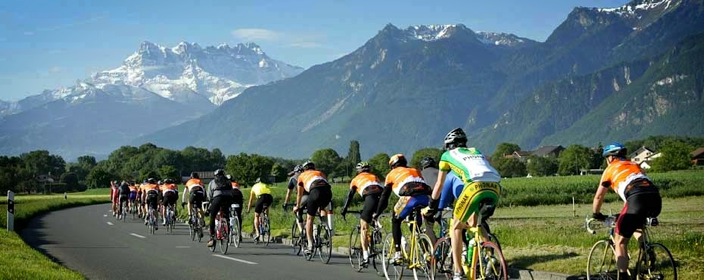
The transition from riding on a bike path to riding on the road can be daunting. But following a few simple guidelines can really make the switch a pleasant one, and offer countless miles of pleasurable cycling, wherever you choose to go. BikeRoar will be publishing three articles on this topic, with each one focusing on slightly more advanced pointers - hopefully in line with your progression.
We also openly invite you to ask us any questions in the comments section below!

Photo: Andreas Kambanis
To get started, it's always important to know that cyclists have the same rules applicable to them as a motorist would have. This means stopping at red lights, and even giving way to other pedestrians. By showing those around you that you're obeying the same rules, you'll find that motorists will also reflect that treatment back to you (and the next cyclist they come across).
Cyclists have developed a reputation for flouting the law when it suits them, and yet expecting fair treatment in return. It's up to us to show motorists that we are law-abiding road users, and not just 'people on bikes' riding by our own rules.
The next most important thing to learn is spatial awareness. What's going on around you? It's especially important when you think of this next point - "have they seen me?". Being aware of your surroundings doesn't have to make you a nervous wreck, in fact it will actually help you feel safer and experience less incidents when you do take to the road. Your safety is in your own hands, so it's always good to handle it with care! Check out these 6 points below, to find a good starting point next time you're out riding.
- Look at what's going on behind you from time to time. Do a headcheck Every 3-5 minutes.
- Look left and right if you have clear lines of sight down side streets - see what's coming towards you.
- Listen to what's coming from behind. The sounds you hear can paint a clear picture of what's coming, from the sound of a truck to the sound of a car running over the reflectors on the road.
- Spot obstacles in advance, so you can gradually merge over to avoid them without swerving at the last moment.
- Keep an eye out for cars with internal lights on, or heads visible - they could be about to open their doors in front of you.
- Watch out for rear bumpers coming out of driveways or parking spaces, as reversing cars are less likely to see you approaching.
Next time you're out riding, try remember these points. It makes for a much more predictable riding style, and is therefore easier for you to respond to things and just enjoy your ride more!
NOTE: The best way to learn skills is to jump onto a bunch ride in your area, and the best place to find out about a bunch ride is your local bike shop. Here you can find out the skill level required for each ride and get some handy advice on where to start.
The next step to safe riding on the road is learning basic hand signals. By using hand signals, you allow other road users to predict your movements more effectively. If you develop your riding to the point of cycling in a bunch (keep an eye out for the next episode!), these hand signals become an integral part of bunch cohesion and riding safely as a group.
The most common worldwide hand signals are shown below in a simple diagram, making it nice and easy to start integrating them into your daily cycling. A quick tip for those who are still finding their confidence - try riding with alternating hands off the bars. If you're going to be learning hand signals, you'll have to do all of them with one hand off the bars! Try this out first before jumping into the deep end.

Last of all, ride safely... If you're riding in traffic, try riding a bike width away from the gutter. This will encourage motorists to actively overtake you, as opposed to trying to sneak past you and pushing you off the road, and most of all, if you don't feel safe - don't ignore it. Get off the road, and try taking some back streets. There's no point in riding on a road you can't enjoy, so always opt for the safer option. Maybe leave a little earlier or later, and take the more scenic route. After all, this is about pleasure!
Until episode two, ride safe!


